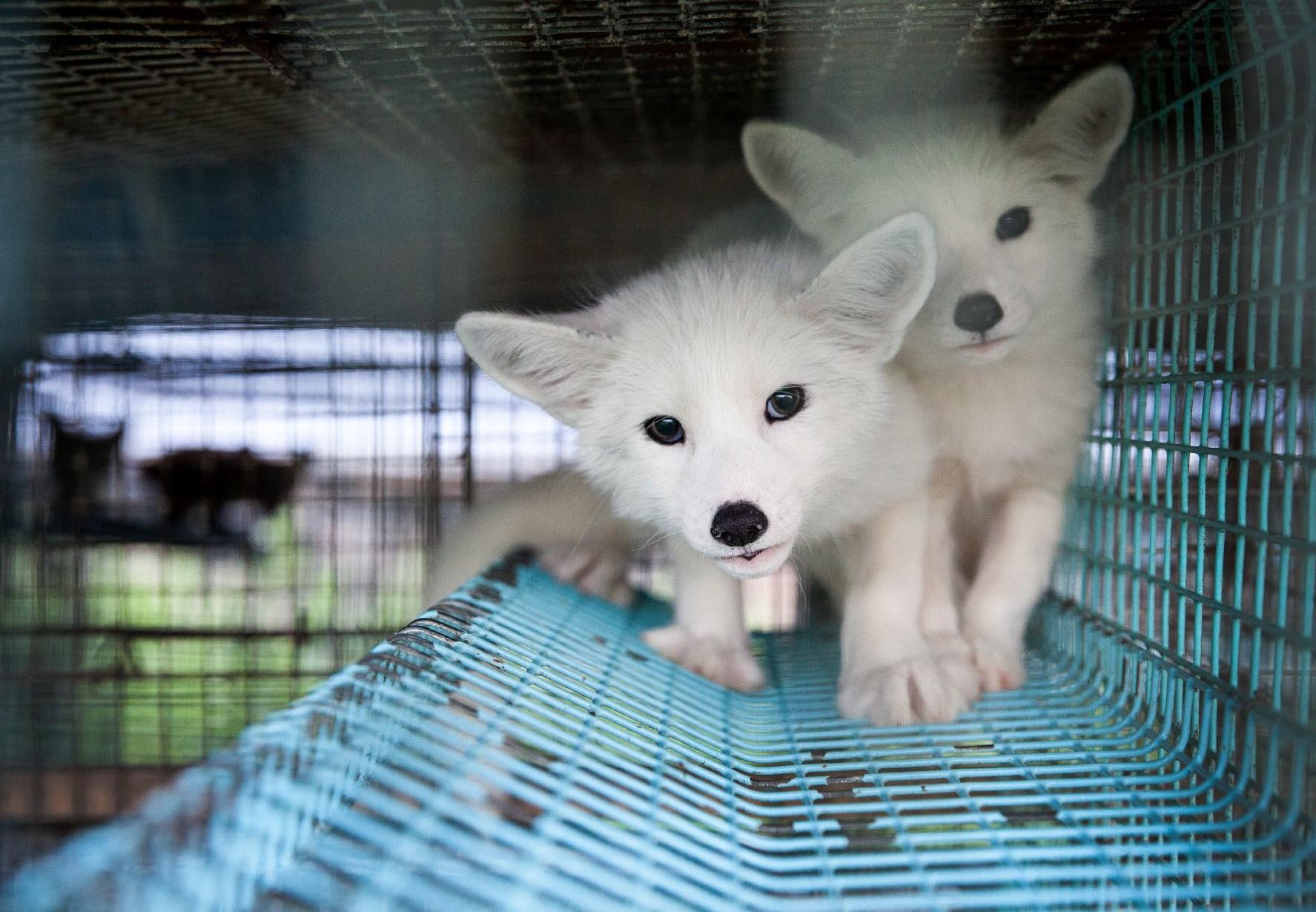
Which Animal Species Are Abused in the Fur Industry?
Fatal beauty: mink, fox and the raccoon dog are typical animals who suffer for their looks
Unlike our ancestors, we are no longer dependent on fur today. Warming garments made of alternative materials and deceptively realistic looking fake fur have long been available. Nevertheless, all over the world certain animal species are still admired - and tormented - for their particularly beautiful, dense fur. This beautiful fur becomes the fate of fur animals like minks, foxes, raccoon dogs and many other species.
Here, you will find an overview of the typical fur animals - and the sad conditions in which they have to live until their death.
Mink abused for fur
When the term 'mink' is mentioned, many people do not even think of the small predator from the mustelids family, but of a fur coat. The mink is probably the most famous of all fur animals. While the European mink is strictly protected, American minks are bred as fur animals or are caught directly in the wild with brutal traps. On fur farms, American minks (Mustela vison) live in tiny wire mesh cages, which have a surface area of just a quarter of a square meter and are about 45 cm high. In addition, there is a sleeping box the size of a shoe box. Breeding animals are usually kept individually; the young animals intended for fur production usually stay together in pairs until they are killed.
As food, farm minks are given a food mash which is smeared onto the grid, they cannot live out their biting instinct this way. The very mobile animals are extremely restricted in their urge to move. Minks also have webbed feet and roam up to six kilometres in the wild, mostly in and around water. Nevertheless, on fur farms they are deprived of bathing opportunities for swimming and diving. They cannot climb, hide or interact with or avoid other animals of the same species. Studies show that 70 percent of farm minks exhibit stereotypical behaviour such as highly repetitive movements, pacing and excessive grooming or licking.

Raccoon dogs abused fur
Perhaps an animals you've never heard of, and there is a reason for this: raccoon dog fur is called by many different names in the trade, often "Finnraccoon", "Russian Raccoon" or "Chinese Raccoon" or in German as raccoon, because of its visual similarity to this unrelated species. Other names are "sea fox" or "Tanuki". In fact, the raccoon dog is one of the most widespread fur animals at all.
The predators belong to the group of canine animals and are kept particularly often in China and to a lesser extent in Finland due to their supposedly low food and husbandry requirements. In unstructured wire mesh cages with a maximum surface area of one square metre and a height of 75 cm, the raccoon dog cannot move enough, nor can they live out their exploratory behaviours. the wire mesh floors can cause injuries and deformation of the paws. Due to the inadequate keeping and the proximity to conspecifics, the animals are under permanent stress. In the wild, the nocturnal omnivores prefer dense undergrowth and proximity to watercourses, where they also dive for fish. Their roaming areas are on average almost ten square kilometres in size, with the animals avoiding foreign conspecifics. Depending on the weather, the raccoon dogs hibernate in the winter, for which they use burrows. Both parents are responsible for raising the young animals.

Red foxes and arctic foxes abused for their fur
Everyone knows the beautiful red fox (Vulpes vulpes) from our forests. Due to its beautiful red fur, this intelligent and sensitive animal is also kept on fur farms under cruel conditions. He shares this fate with his conspecifics in the colour variation silver fox, which have been intensively hunted for centuries because of their impressive silvery-black fur and have been almost exterminated in the wild. His relatives, the arctic fox (Alopex lagopus as white or blue fox), are also tormented and killed as fur animals.
The conditions under which these animals are kept are catastrophic: the cages, made entirely of wire mesh, are about 0.8 square metres in size and 70 cm high for individual animals. The only equipment is usually a water container, only during the litter time are the foxes (female foxes) provided with a 'sleeping' box. The food mash is lubricated on the cage grid. In their natural habitat foxes can live in large roaming areas, earth burrows are used as resting places and for raising the puppies. The wire mesh of the farm cages, on the other hand, offers no structures whatsoever. The foxes can hardly move. Lack of retreat possibilities in the cages also contributes to the pronounced anxiety of the animals or biting among themselves. The foxes cannot satisfy their natural urge to dig. The grid floor injures their paws and due to the lack of movement, the foxes suffer from bone damage. Cannibalism is also a big problem, especially in breeding: 20 percent of all puppies fall victim to the foxes. In the wild, the rearing of puppies takes place in complex social systems.


